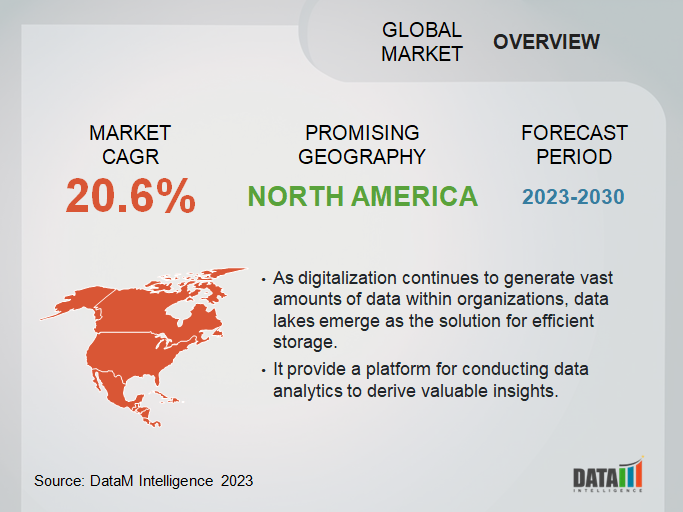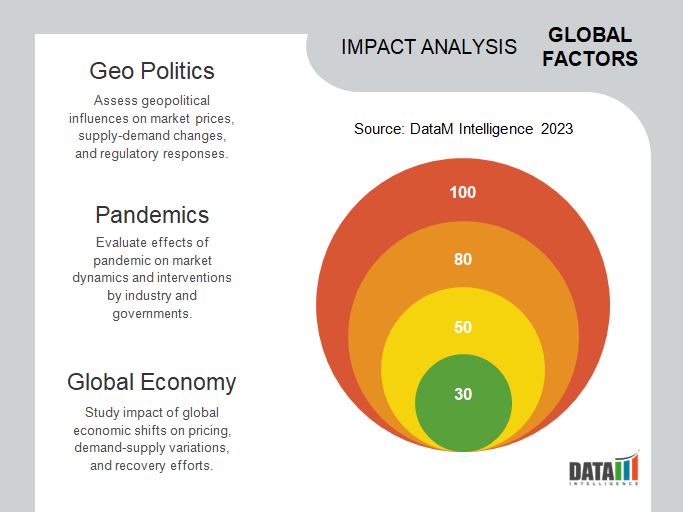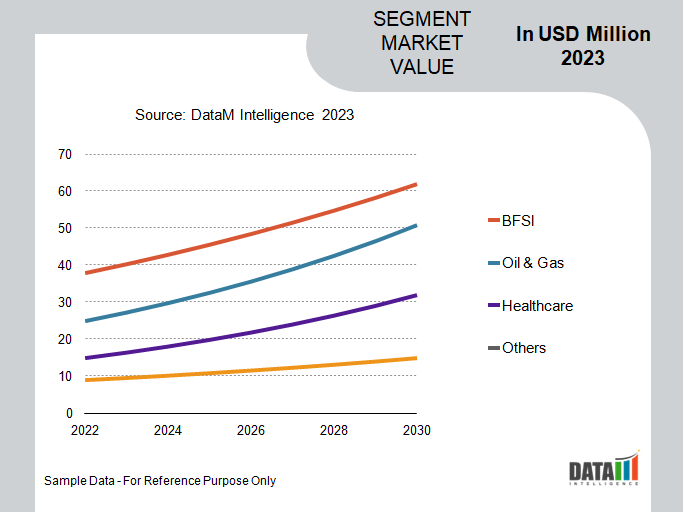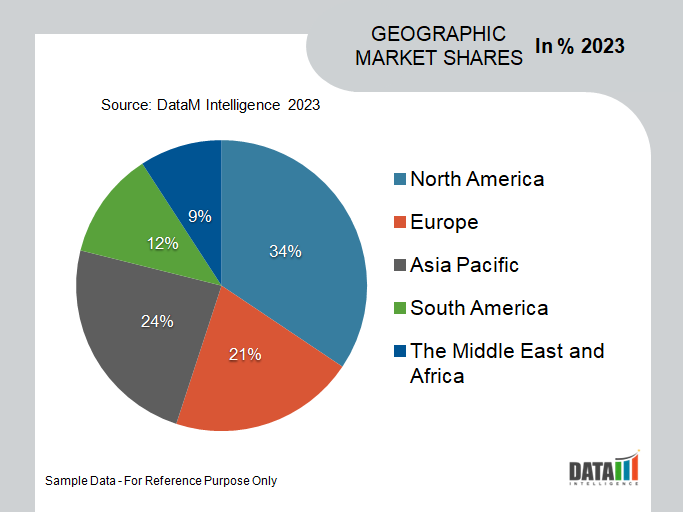Global Data lakes Market is segmented By Offering (Solution, Service), By Deployment (Cloud-based, On-premise), By End-User Industry (BFSI, Oil & Gas, Healthcare, Others), and By Region (North America, Latin America, Europe, Asia Pacific, Middle East, and Africa) – Share, Size, Outlook, and Opportunity Analysis, 2024-2031
Data lakes Market Overview
Global Data Lakes Market is estimated to grow at a CAGR Of 20.6% during the forecast period 2024-2031.

Due to the low cost of data storage and features of data lakes such as flexibility & accessibility, data authenticity and speed will grow the market for the data lakes in the forecast period.A data lake is a centralized repository that allows you to store all your structured and unstructured data at any scale. You can store your data as-is without first structuring the data and running different types of analytics from dashboards and visualizations to big data processing, real-time analytics, and machine learning to guide better decisions.
Unstructured data files often include text and multimedia content. Examples include e-mail messages, word processing documents, videos, photos, audio files, presentations, webpages, and many other kinds of business documents.The report covers all the major trends and drivers playing a key role in the growth of the Data lakes market. The data lakes market is segmented by Offering, Deployment, End-user Industry, and Region.
Data lakes Market Summary
|
Metrics |
Details |
|
Market CAGR |
20.6% |
|
Segments Covered |
By Offering, By Deployment, By End User, and By Region |
|
Report Insights Covered |
Competitive Landscape Analysis, Company Profile Analysis, Market Size, Share, Growth, Demand, Recent Developments, Mergers and acquisitions, New Product Launches, Growth Strategies, Revenue Analysis, and Other key insights. |
|
Fastest Growing Market |
Asia Pacific |
|
Largest Market Share |
North America |
To know more insights Download Sample
Data lakes Market Growth Trends
The global Data lakes are primarily driven by the rise in the data abruptly all around the world. This sudden rise of data because of the rising IoT has created the demand for data storage so that it can be used later for deriving insights. Hence, the demand for low-cost storage and growing investments in smart cities, which are using IoT on a large scale worldwide, will help grow the market for the forecast period.

For instance, India (GoI) announced the 30 new cities under Smart Cities Mission, taking the total number of proposed smart cities to 90 cities. The government has announced to development of 100 smart cities in India. The government has planned to invest INR 1.91 trillion (US$ 30 billion) for the 89 cities under the mission. As per the proposed investment, 80% of the funds would be spent on area-based development (ABD) and the remaining 20% of the funds on ICT Solutions.
The business today heavily relies on the data for better decision-making. With the rising digitalization generating a large amount of data with the organization, data lakes provide the solution for effective storage of the large data and help provide a platform for running the data analytics on the data to derive insights. The various features of the data lakes boost the market for the forecast period.
Essentially, large banks have the potential to drive tremendous investments towards digitization and are gradually understanding the disadvantage in just upgrading the legacy software and hardware systems, which is an expensive and continuous process. Representing a common trend in today’s financial marketplace, Lloyd’s Banking Group in 2018 invested in a fintech company to adopt its online banking system.
However, without any organization or structure of data in data lake repositories, analysts who want to use the data have no idea how to do so. The data ends up just sitting in the data lake and is rarely used, and hence Data lakes become data swamps which are the main reason that will be hampering the growth of Data lakes in the forecast period.
Data lakes Market Segmentation Analysis
By Deployment Type, the global Data lakes market is segmented into Cloud-based and On-premise. On-premise has the dominant position in the Data lakes deployment market and is expected to retain its dominance over the forecasted period, mainly due to the adaptation of the technology by the bigger organization that is concerned about data security and data privacy. However, Cloud-based is also gaining the market due to the increasing demand by the SME because of cost-effective and time-effective solutions. It is expected that the On-premise market will grow at a high CAGR during the forecast period.
By End-User, the global Data lakes market is segmented into BFSI, Oil & Gas, Healthcare, and Others. Oil & gas has a dominant position in the Data lakes market due to the rise in the oil & gas industry. Being able to predict and proactively repair wells to keep them functioning is vital since revenue is lost when a well is down, especially since the average offshore rig can cost up to $500,000 per day to operate. Given the sheer volume of data and the economics of the use cases, it is no surprise oil and gas is an early adopter of data lakes and analytics technologies.

Data lakes Market Geographical Share
By geography, the global Data lakes market is segmented into North America, Asia-Pacific (APAC), Europe, South America, and the Middle East and Africa (MEA).
North America holds the largest market share for Data lakes as the leader in innovation and developments. So, the adoption rate of new technology is also high in the region. The rise in the oil & gas industry in the region will also boost the Data lakes market for North America in the forecast period.
For instance, in July 2018, Attunity Wins $2.3M Term-based Deal with Large Oil and Gas Company (The customer) to Enable Strategic Microsoft ADLS Data Lake on Azure. The Customer, a leading oil and gas provider, based in North America, required a solution for consolidating huge data volumes, including an SAP table with approximately 1 billion rows and data from various Oracle and SQL Server on-premises production platforms to the cloud-based data lake. The company does not disclose the customer.
Europe is after APAC in terms of the market share of Data lakes. However, with the rising economies and the adaptation of technologies for the sectors such as banking, developing countries like India and China are expected to boost the data lakes market in Asia-Pacific for the forecast period. For instance, the State Bank of India (SBI) is going beyond the practice of data warehousing to create a data lake, which will offer on-the-go analytics to bank executives, deputy managing directors, and chief information officers.

Data lakes Market Companies and Competitive Landscape
Key players are adopting strategies such as investing in R&D, new product launches, expansion in Technology to stand out as strong competitors in the market. Global Data lakes is a competitive market with various global and regional players in the market. The major players, Hortonworks, Google, Oracle, Microsoft, and Zaloni. Other key players in the market include Teradata, Impetus Technologies, Cloudera, Amazon, and IBM.
In April 2019, Temenos, the banking software company, launched Temenos Data Lake and is first to market with a robust, productized data lake that integrates big data analytics into its banking software. Temenos Data Lake delivers out-of-the-box data integration, preparation, and optimization to power AI-driven banking applications.
In January 2019, Tata Consultancy Services (TCS), a leading global IT service, consulting, and business solutions organization, has launched the TCS Connected Intelligence Data Lake for BusinessTM on AWS Marketplace. The newly launched software captures and manages all types of data in a central Hadoop repository. Business users can pull elements using a simple drag and drop interface to generate analytics quickly and gain insights to solve business challenges quickly.
